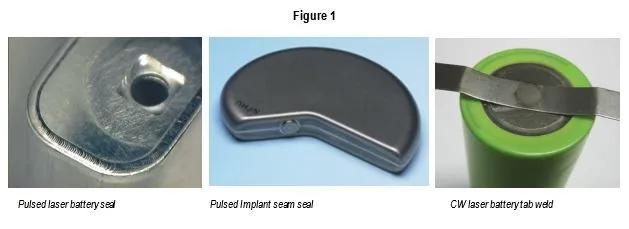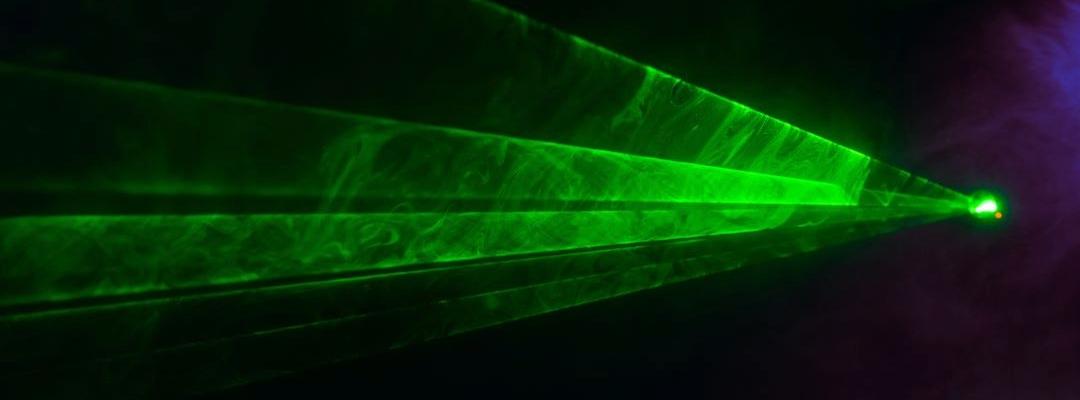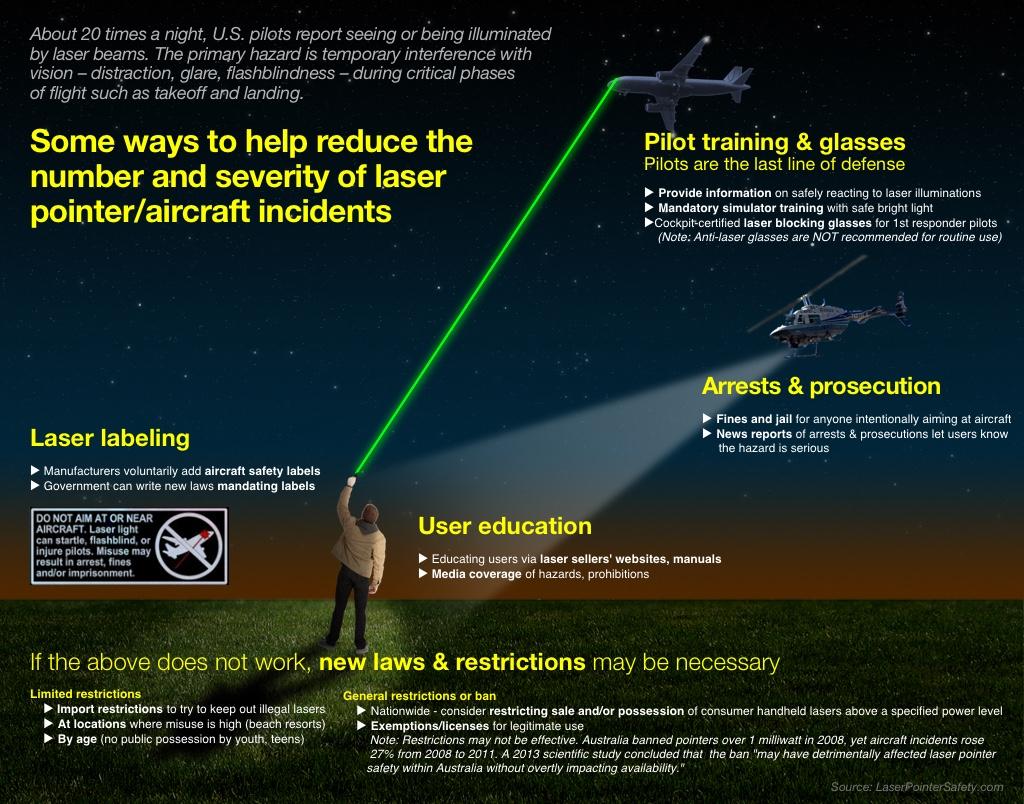Welcome to a journey where science fiction morphs into science fact, and the future beams brighter than ever! Picture this: a world where precise beams of light shape industries, revolutionize medicine, and maybe even offer a sneak peek into the cosmos. We’re talking about lasers, once the stuff of speculative novels, now an integral part of our reality. But this is no ordinary exploration. We’re setting our sights far beyond today, delving into the captivating realm of long-term impacts. So grab your curiosity and set your phasers to stun as we embark on an enlightening adventure, unveiling the future and unraveling the ripple effects of laser use!
Table of Contents
- Understanding Laser Technology: A Deep Dive into Its Mechanics
- Navigating the Health Impacts: What Continuous Laser Use Means for You
- Eco-Friendly Lasers: Shining Light on Environmental Considerations
- Maximizing Benefits while Minimizing Risks: Strategies for Safe Laser Use
- Investing in Tomorrow: Forward-Thinking Approaches to Laser Applications
- Q&A
- Insights and Conclusions
Understanding Laser Technology: A Deep Dive into Its Mechanics
Laser technology often evokes images of sci-fi movies, but its real-world mechanics are grounded in fascinating science. At its core, laser stands for Light Amplification by Stimulated Emission of Radiation. This technology operates by exciting atoms or molecules to high energy states. When these states decay, they emit photons in sync, creating a concentrated beam of light. This light is unique not just for its coherence and monochromatic properties, but also for being highly directional, which makes lasers exceptionally precise tools in various fields.
Understanding the mechanics of lasers involves delving into the types of mediums used. There are several categories, including:
- Gas Lasers: Utilize gases like helium-neon or carbon dioxide for wider beams.
- Solid-State Lasers: Employ solid materials such as crystals or glass, with examples like ruby lasers.
- Semiconductor Lasers: Consist of materials such as gallium arsenide and are used in common devices like DVD players.
- Fiber Lasers: Use optical fibers doped with rare earth elements for high-power outputs.
Each type has unique properties and specific applications that leverage their strengths.
Lasers also have vital components that ensure their optimal operation. These include:
| Component | Function |
|---|---|
| Gain Medium | Amplifies light by stimulated emission |
| Energy Source | Pumps energy into the gain medium |
| Mirrors | Form a resonant optical cavity |
| Brewster Windows | Reduce reflectivity losses |
These components are meticulously engineered to work in harmony, ensuring the laser produces a consistent and powerful beam.
In practical applications, laser technology is as versatile as it is powerful. From cutting-edge medical surgeries and intricate industrial cutting to everyday consumer electronics and secure communication networks, lasers have left an indelible mark across sectors. The controlled precision of laser beams ensures minimal invasion in surgeries, while their high directionality supports detailed manufacturing processes. As technology advances, the scope of laser applications continues to expand, setting new frontiers in both scientific innovation and everyday convenience.

Navigating the Health Impacts: What Continuous Laser Use Means for You
Continuous exposure to laser technology may sound like a daunting concept, especially when considering its long-term health effects. Studies indicate that extensive use could lead to a range of both temporary and permanent impacts. **This knowledge is crucial for professionals in fields such as medicine, manufacturing, and entertainment**, where laser use is prevalent. By understanding these effects, we can take proactive steps to protect our wellbeing while reaping the benefits of this advanced technology.
- **Eye Health Concerns**: The risk of retinal damage increases with prolonged and unprotected exposure. Symptoms might include visual disturbances, eye strain, and potential vision loss.
- **Skin Impacts**: Continuous laser use can lead to burns, skin pigmentation changes, or even more severe skin conditions if not adequately managed.
- **Mental Fatigue**: The precision and focus required when using lasers can lead to cognitive overload and mental exhaustion over time.
Implementing best practices for laser safety can mitigate many of the adverse effects. **Investing in proper protective gear**, such as specialized goggles and clothing, can reduce risks. Regular training sessions help ensure that you and your team are always up-to-date with the latest safety protocols. Additionally, integrating proper facility ventilation systems can prevent the inhalation of any harmful materials generated during laser operations.
| Health Impact | Mitigation Strategy |
|---|---|
| Eye Strain | Use protective goggles |
| Skin Burns | Wear protective clothing |
| Mental Fatigue | Take regular breaks |
Apart from safety equipment, maintaining **routine check-ups with healthcare professionals** is essential. Regular eye exams, skin assessments, and cognitive evaluations can help catch early signs of laser-induced health issues. Documenting and monitoring any unusual symptoms can offer valuable insights for both personal and professional use, ensuring that laser technology continues to illuminate our futures without dimming our health.

Eco-Friendly Lasers: Shining Light on Environmental Considerations
As we propel further into the future of innovative technologies, it’s integral to explore how these advancements interact with our environment. Lasers, once confined to the realm of science fiction, now play pivotal roles in industries ranging from medicine to entertainment. Yet, these beams of focused light come with their own set of ecological concerns.
Materials and Manufacturing Process
The journey of a laser begins with its materials and manufacturing processes. Conventional laser production can involve the use of rare earth minerals, which have significant environmental extraction impacts. Key considerations here include:
- Mining Rare Minerals
- Energy-Intensive Manufacturing
- Emissions During Production
Adopting sustainable practices and alternative materials can mitigate these effects, but it remains a challenge for industries to balance performance with environmental responsibility.
Energy Consumption
Laser operations demand precise energy inputs, and their carbon footprint can’t be ignored. The high energy consumption can strain local power infrastructures and contribute to overall greenhouse gas emissions. Some eco-friendly advancements are:
- Development of Low-Power Lasers
- Implementing Renewable Energy Sources
- Improving Energy Efficiency of Laser Systems
Adoption of greener energy solutions is crucial in making laser technology more sustainable in the long term.
| Laser Type | Energy Efficiency | Common Use |
|---|---|---|
| Solid-State | Medium | Medical Procedures |
| Fiber | High | Telecommunications |
| Gas | Low | Lighting and Displays |
Waste and Disposal
The end-of-life phase of lasers introduces another layer of environmental concern. Disposal of laser equipment can lead to:
- Electronic Waste
- Chemical Contamination
- Non-Recyclable Components
Innovative recycling programs and eco-design can help minimize the adverse effects, contributing to a circular economy where laser components are reused and repurposed.

Maximizing Benefits while Minimizing Risks: Strategies for Safe Laser Use
Embracing laser technology opens up vast opportunities for various applications, but doing so responsibly is key to reaping the benefits while sidestepping potential pitfalls. One crucial strategy includes **understanding and adhering to safety protocols** specific to each type of laser. Whether in medical treatments, industrial applications, or beauty therapy, each laser class has distinct guidelines that ensure safe use. Ignoring these protective measures can lead to severe, irreversible consequences.
Maintaining a well-documented **safety checklist** is essential, which could include:
- Proper Training: Ensure all operators are well-trained in the functionality and safety procedures of the laser equipment.
- Eye Protection: Use appropriate laser safety glasses to protect against accidental exposure.
- Regular Maintenance: Routine inspections and servicing of laser devices to maintain peak performance and safety.
To further mitigate risks, **environmental controls** can play a significant role. Creating a controlled environment where lasers are used involves shielding against reflective surfaces, controlling access to the laser operation area, and using appropriate warning signs to alert individuals of potential hazards. These measures are particularly effective in highly trafficked or shared spaces, where accidental exposure might occur.
Consider the following table illustrating the balance between benefits and potential risks across different laser applications:
| Application | Benefits | Potential Risks |
|---|---|---|
| Medical Treatments | Precision, Minimally Invasive | Eye Damage, Skin Burns |
| Industrial Cutting | High Accuracy, Efficiency | Fire Hazard, Respiratory Issues |
| Beauty Therapy | Skin Rejuvenation, Hair Removal | Skin Irritation, Improper Results |
By following these strategies, users can **optimize the advantages** of laser technology while significantly **reducing the chances of adverse effects**. Staying updated with technological advancements and evolving safety guidelines ensures that laser use remains both effective and safe in the long term.

Investing in Tomorrow: Forward-Thinking Approaches to Laser Applications
In the ever-evolving landscape of technology, **laser applications** stand out as a beacon of innovation with vast potential to reshape various industries. By investing in these cutting-edge technologies today, we are setting the stage for a plethora of groundbreaking advancements tomorrow. One can witness the transformative power of lasers in myriad sectors, from medical treatments to manufacturing processes, each harnessing the precision and efficiency that these focused beams offer.
**Medical advancements** have been particularly remarkable with the advent of laser technology. Procedures that once required invasive techniques can now be performed with minimal intrusion, reducing recovery times and improving patient outcomes. For instance:
- Laser eye surgery has revolutionized vision correction, offering precise and quick solutions for conditions like myopia.
- Dermatology benefits from laser treatments, effectively managing skin conditions and aiding in cosmetic enhancements.
- In oncology, lasers are used in targeting cancer cells with more accuracy, minimizing damage to surrounding healthy tissues.
In the realm of **manufacturing and engineering**, lasers are equally transformative. The ability to cut materials with extreme precision and consistency has vastly improved production quality and efficiency. Key applications include:
- High-precision laser cutting and engraving in metal fabrication.
- 3D laser printing, enabling the creation of complex and customized components.
- Automotive industry innovations in welding and part inspection through laser technologies.
Looking ahead, the potential for **environmental and defense applications** of laser technology is equally promising. From enhancing remote sensing capabilities to improving energy conservation methods, the future is bright. Consider the following table summarizing potential future applications:
| Field | Potential Application |
|---|---|
| Environmental Science | Pollution detection and monitoring |
| Astronomy | Space debris tracking |
| Renewable Energy | Laser-powered solar cells |
| National Security | Directed-energy weapons |
Q&A
Q&A: Unveiling the Future: Long-Term Effects of Laser Use!
Q: What is the main focus of the article “Unveiling the Future: Long-Term Effects of Laser Use”?
A: The main focus of the article is to explore the long-term effects and potential future implications of laser technology across various fields, from healthcare to entertainment. The article delves into both the benefits and challenges associated with ongoing laser use and what we can expect as technology continues to evolve.
Q: Why should I be interested in the future effects of laser use?
A: Lasers are becoming integral in myriad aspects of our daily lives, beyond science fiction and into reality. Whether it’s for medical procedures, communication systems, or innovative entertainment experiences, knowing their long-term effects helps us harness their full potential while being prepared for any challenges they might bring.
Q: Is laser technology safe in the long run, particularly in medical applications?
A: Generally, laser technology is considered safe when used appropriately, especially in medical applications like surgeries and eye treatments. The article emphasizes studies showing positive long-term outcomes but also highlights the importance of ongoing research and regulation to ensure that safety standards evolve with the technology.
Q: How might laser technology impact the entertainment industry in the future?
A: Imagine holographic concerts, interactive laser shows, and immersive virtual environments right in your living room! The article paints a vivid picture of how laser tech could revolutionize entertainment by creating more dynamic, engaging experiences. Think of it as the next step beyond high-definition and 3D movies!
Q: Are there any environmental concerns associated with increased laser use?
A: Yes, the article touches on environmental factors, such as the energy consumption and waste associated with laser production and usage. It calls for sustainable practices and innovations to mitigate any negative environmental impact, ensuring that laser advancements contribute to a greener future.
Q: How could laser technology affect our communication systems in the long term?
A: Laser technology promises faster, more secure communication networks. Whether it’s enhancing fiber-optic cables or advancing satellite communications, the article suggests that the efficiency and reliability of our global communication infrastructure could be greatly improved through lasers, paving the way for a hyper-connected world.
Q: What are some of the potential risks of long-term laser exposure mentioned in the article?
A: The article acknowledges potential risks such as skin and eye damage from prolonged exposure, especially if safety protocols are not followed. It also discusses the need for further research into less understood aspects, like the long-term effects of laser radiation on human health and electronics.
Q: Will laser technology become more accessible to the general public in the future?
A: Absolutely! As the technology advances and production costs decrease, lasers are likely to become more accessible for everyday uses. From home healthcare devices to DIY holographic displays, the article foresees a future where laser technology is not just for specialists, but something everyone can benefit from.
Q: How does the article suggest we prepare for the future of laser technology?
A: Education and awareness are key! The article advocates for better public understanding of laser technology and its impacts, along with robust regulatory frameworks to guide its ethical and sustainable use. It also encourages fostering innovation while remaining vigilant about potential risks.
So, gear up for a bright, laser-lit future, where the possibilities are as wide-ranging as a spectrum of light!
Insights and Conclusions
As we stand on the cusp of dazzling developments, the long-term effects of laser use beckon us toward boundless possibilities. The journey we’ve embarked on today is but a glimpse into the radiant future that awaits us, where science and innovation light the way. Whether it’s revolutionizing healthcare, enhancing technological marvels, or pioneering new realms of exploration, lasers are the luminous threads weaving together the tapestry of tomorrow.
Thank you for joining us on this illuminating journey through the future’s beam of potential. Keep your eyes and minds open, for the light is only growing brighter. Until next time, may your curiosity be as powerful as a laser and your discoveries just as cutting-edge. Shine on!






